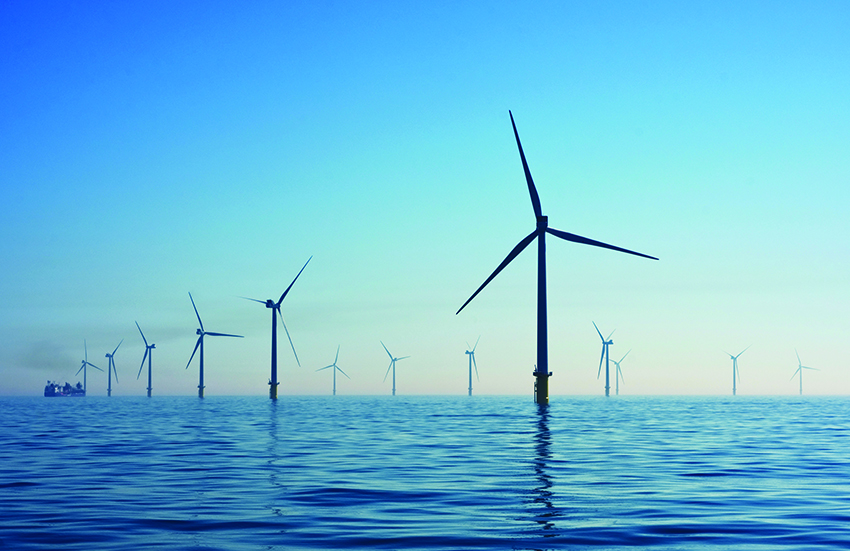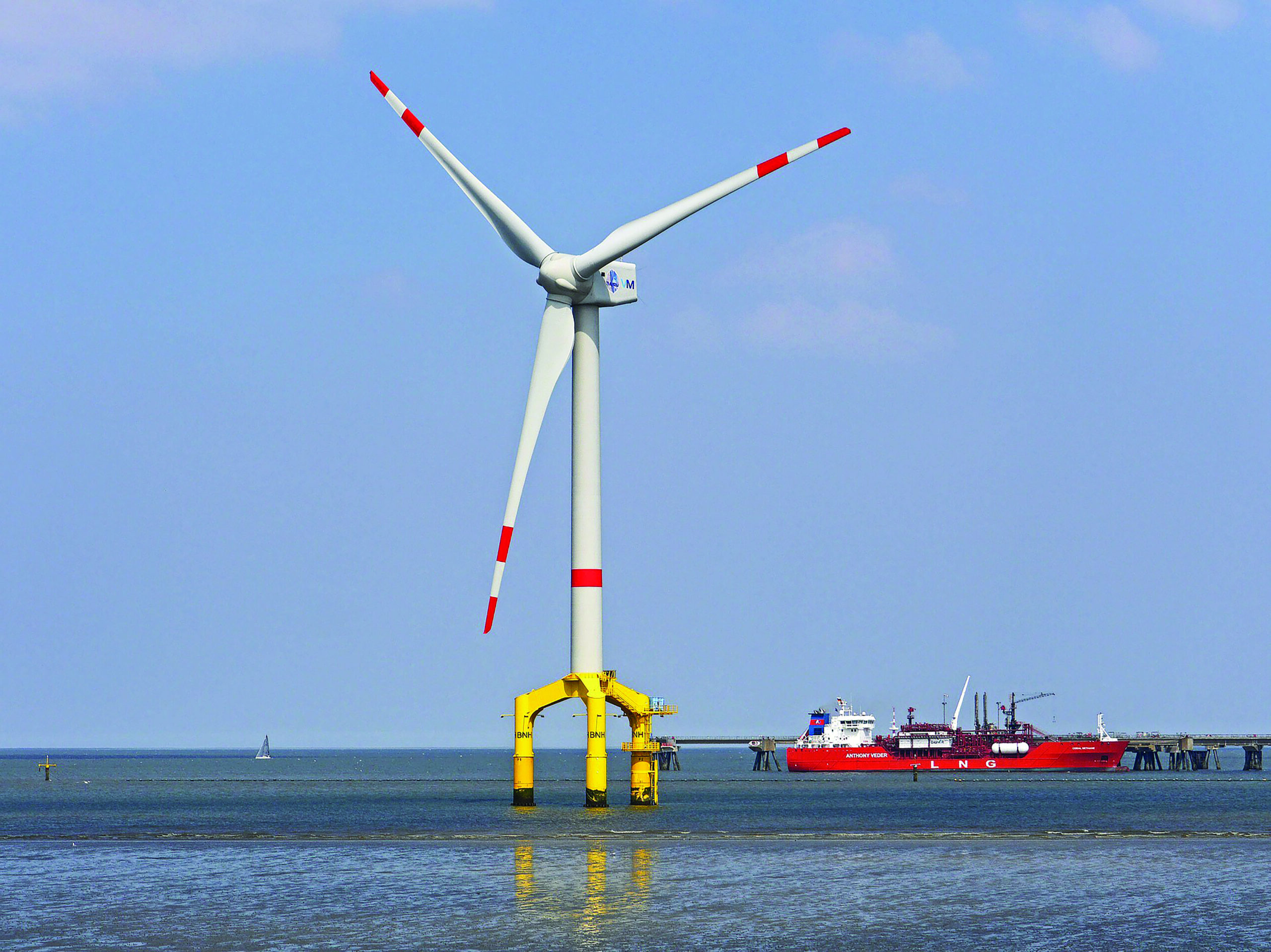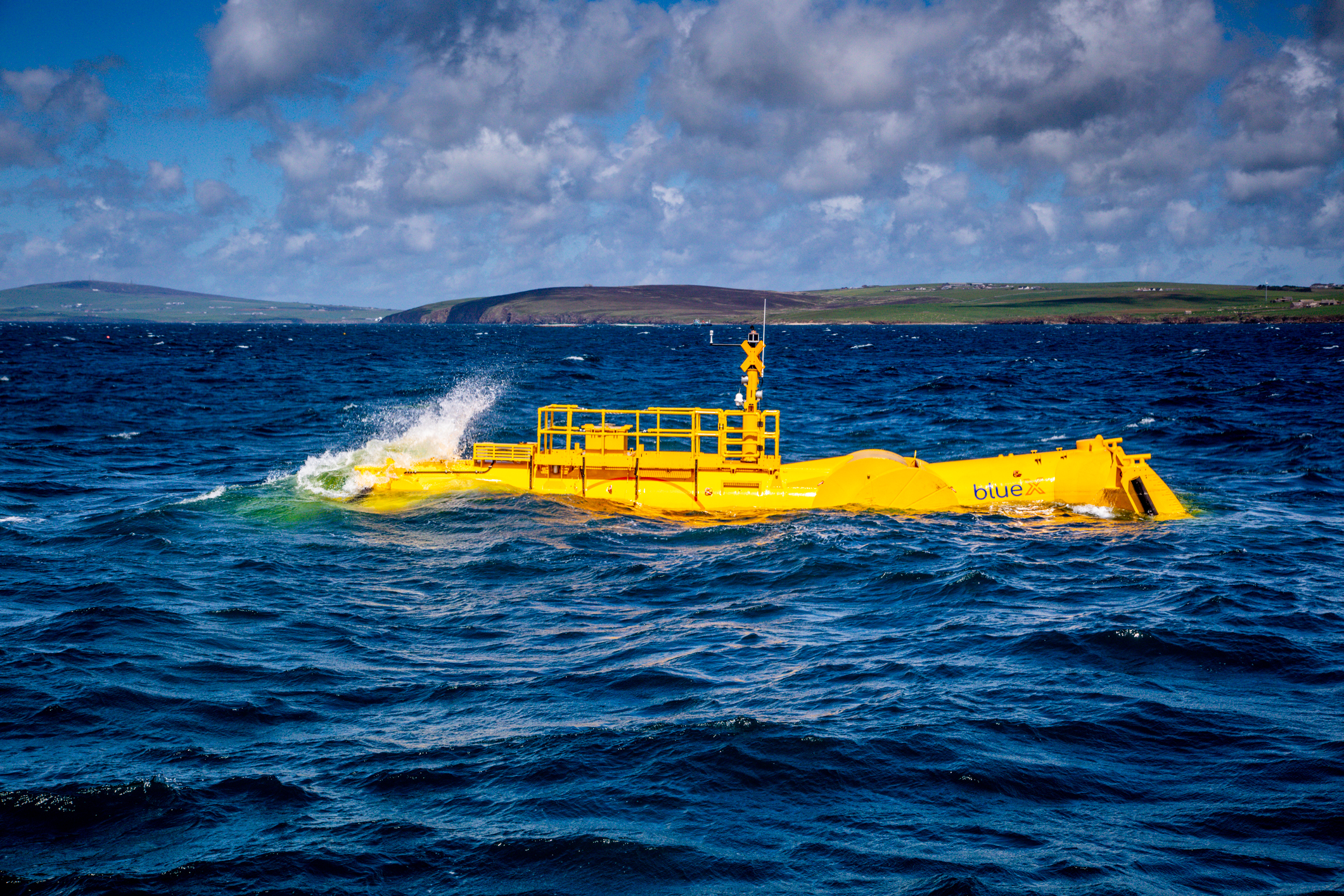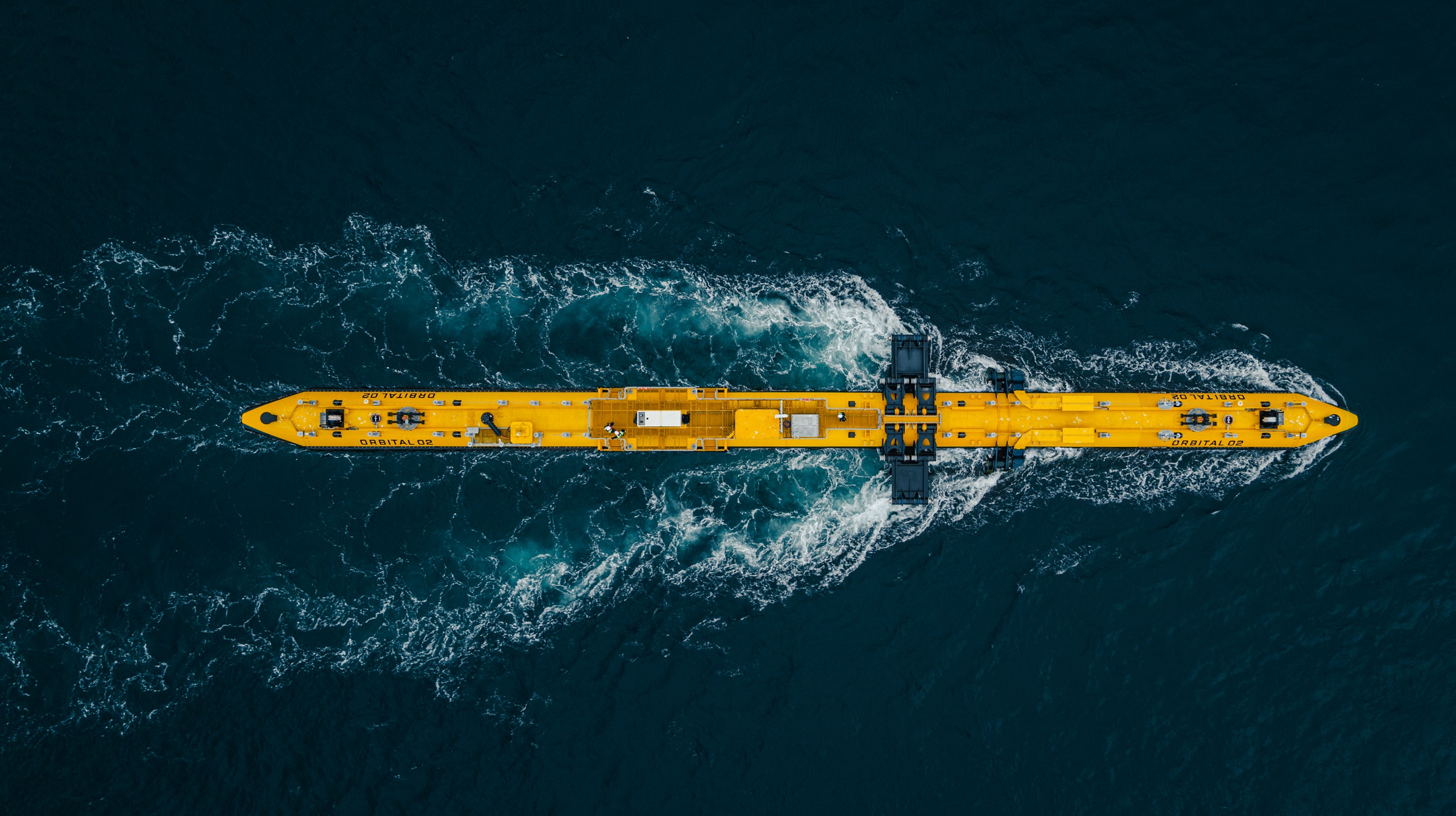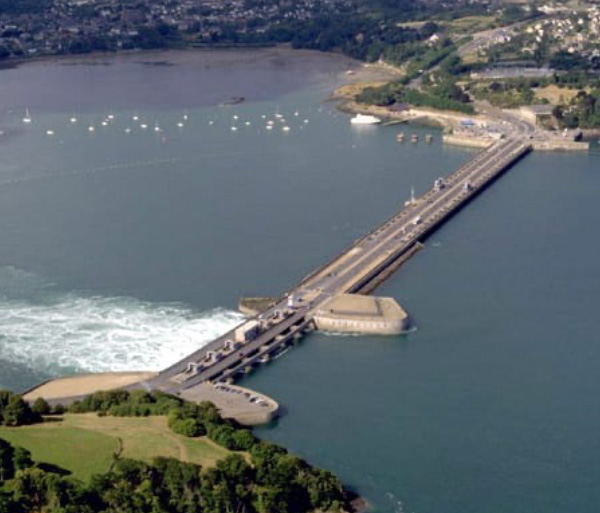- For School Leavers and Beyond
- Beyond a First Degree
- Diving & Undersea Vehicles
- Engineering
- Geography
- Geological Sciences
- Marine Engineering
- Marine Survey
- Maths, Physics and Chemistry in Oceanography
- Naval Architecture
- Offshore Renewable Energy
- Offshore, Subsea and Pipeline Engineering
- The Role of the Biologist in Marine Science and Technology
Offshore Renewable Energy
All over the world, nations are facing challenges about how best to meet the increasing energy demand. Further understanding of how our climate is affected by the burning of fossil hydrocarbon fuel – which contributes to climate change and ocean acidification – plus rising costs, worries about risks of oil spills, and concerns over the security of energy supply from unstable or potentially hostile neighbours has led to the development of a range of new, sustainable, energy production technologies. Many countries around the world have now set firm targets for the proportion of energy that they must deliver from renewable sources and are committed to “Net Zero” by 2050.
Wind Energy
Renewable energy devices extract power from the Sun, from biomass, or natural forces such as wind, river flow, waves, and tides. Apart from the long-established technology of hydroelectric power through the use of dams, the most developed resource at present is wind energy, as the technology is mature and the required devices are relatively simple to build and straightforward to install. While onshore wind turbines offer the lowest unit cost there are limits to acceptable sites and hence the power available. In the UK in 2023 almost 9000 onshore turbines were contributing significantly to energy demand.
Most future significant wind power will have come from offshore locations where the wind at higher levels is stronger and more consistent which can exploited by very large turbines approaching 15MW in power and 300m high. Most of the current offshore wind farms are in shallow coastal waters with fixed bottom foundations of which the majority of potential sites are now occupied. The UK is one of the leaders in fixed offshore wind and in 2023 there were over 2500 turbines in operation providing over 25% of total energy generation.
In the many nations that have very limited continental shelves locations will be in deeper water and further from the coast. These will require floating installations moored to the seabed. This technology is now developing rapidly with many demonstration projects with competing novel floating and mooring and dynamic cable arrangements. Some limited development of this technology has been in deeper Scottish waters around the UK e.g. the first array of five floating turbines in the Hywind project which began operation in 2017.
Application at scale will require the manufacture and installation of very large numbers of structures, mooring, cables, and associated electrical transmission systems including high-voltage DC systems for the more distant sites.
Subsea engineers technologists and scientists work together to design the installations, to understand how best to place the cables and moorings, how to take into account the conditions on the seabed, the shore crossings to avoid causing harm to marine life during the construction and operation of the windfarms.
The potential for offshore wind to meet the electricity demands of some nations is very large with the UK being able to source much of its power from offshore wind when the wind is above average strength, other sources will be required for the low wind periods and back-up generation systems to cover these outages.
Wind power is also being considered for the production of green hydrogen to aid in the decarbonisation of oil and gas production as well as injecting hydrogen into the existing gas transmission and distribution system as a step towards decarbonisation.
Wind energy is intermittent and there are plans to add battery systems to farms to provide a more constant supply.
Marine Scientists, Oceanographers, Meteorologists, Ecologists, Planners, Project Managers, and Engineers are all important to the offshore renewable energy industry, as windfarms or other installations have to take into account the needs of other marine industries and users such as fishing, shipping, marine mammals and birds, aggregate extraction, tourism, and defence. In the UK, sites for offshore wind are leased by the Crown Estate (the ‘landlords’ of the seabed around the UK), and planning approval is given by the Marine Management Organisation.
Wave Energy
While offshore wind energy is already well established, other technologies are becoming available. Efforts to generate electricity from waves and tides have taken place for decades. Waves on water are created when the wind at the surface transfers its energy over long distances. We are aware of the tremendous energy within waves when we witness their destructive power during storms.
In recent years many different designs of wave energy converters have been designed and tested. They need of course to be of robust design to enable them to survive storm events. Some are designed to operate on the coast itself whilst others are intended for placement further offshore but the challenges of surviving storms and the limitations with respect to surface navigation of vessels are considerable. Early design of wave devices demonstrated the technology but were not economic and were discontinued.
Wave energy systems are proving very complex to develop and initiatives like Wave Energy Scotland have been established to deliver a more coherent staged approach to the development of technologies. Efforts to commercialise the technology continue with novel devices for various locations. It is thought that most likely applications will be initially for niche locations including remote island communities that rely on imported diesel at present. Smaller coastal installations in combination with other sources are also being considered including using wave power to pump water for desalination.
Wave devices are also being examined for applications in making steps towards decarbonisation of oil and gas production. This could involve powering remote wells with batteries included in the system.
Tidal Streams
Tidal stream devices extract the energy from the tidal stream (or flow). The tides, and the resulting tidal streams, are a result of gravitational interaction with the sun and the moon and as such can be reliably predicted decades in advance. Hence tidal stream energy systems have an important advantage that, subject to reliability, their power outputs will be entirely predictable. Furthermore, in conjunction with large scale battery installations, the production of electricity may be much closer to a level output. Tidal stream energy systems fall into three types: and machines that can be placed directly in tidal streams near the surface with floating devices; devices moored mid-water in deeper water areas or founded on the on the seabed to extract energy from tidal streams.
Robust seabed tidal power generators have been developed by a few major companies and their deployment is continuing at a number of locations around the world eg the UK Orkney Islands. The Meygen scheme by Simec-Atlantis consists of four bottom-founded turbines operating in the Pentland Firth since 2017 has by mid-2023 produced a total of 51GWh to the grid. Orbital Energy has been operating a 2MW device since 2022, which is floating and tight-moored, in the Fall of Warness (Orkney). A second device is to be added in the near future. These two devices feed a set of Vanadium Flow batteries that may be used to smooth the supply of power. Minesto has installed two x 100kW devices (which fly in a figure of eight mid-water) in the Faroe Islands
Tidal Barrage
The barrage-type tidal power station on the Rance estuary in Brittany, France has produced electricity since the 1960s using essentially similar technology to that found in dams. Such barrages, which capture water at high tide, allow for turbines to generate on the rising tide (flow) as well as the falling tide (ebb). The generation may be controlled to give a more baseline response to electricity production.
Much more ambitious schemes, that alone could supply a significant percentage of the UK’s electricity, have been considered for many years. This has been looked at to include the building of barrages across rivers including the Severn and Mersey Estuaries to take advantage of some of the larger tidal ranges in the world. These proposals have been highly controversial due to the potential impact on the diversity of many species, both marine and birds. An alternative system, using a lagoon instead of a barrage, has been put forward for Swansea Bay and other locations. However, the economics over the medium term compared to wind power and nuclear as well as some environmental concerns have hampered developments, a longer-term approach reflecting the longevity of well-designed schemes may be required.
Ocean Thermal Energy Conversion (OTEC)
OTEC systems have been demonstrated over many years both floating and onshore where the water is deep close to the coast (such as Hawaii). OTEC is a heat pump system that utilises the warm water near the sea surface to evaporate a refrigerant fluid (ammonia or ammonia and water are examples), this warmed vapor drives an expander turbine/generator to produce the power. The refrigerant vapor is then cooled and condensed by cold water from the deep sea (usually about 1000m depth). The liquid is then vaporised as the cycle repeats. The cycle was first investigated by Carnot over 100 years ago. The cold water has associated uses: to provide air conditioning and to find uses in the cosmetic and drinks industries as it is sterile and rich in nutrients.
The temperature difference between cold and warm water streams should be 20 centigrade degrees so this system is useful in the tropical areas of Earth. There are over 30 island communities in these regions that would benefit from the deployment of this technology.
Solar Energy
Solar energy is very well developed on land and now provides low-cost electricity. There has recently been interest in floating solar units operating on the sea or inland waters. Such units need to be anchored or built onto platforms.
Summary
Offshore renewable energy is here to stay. Wind is just the first of a whole variety of different technologies that will work together to meet the demand for clean, safe, renewable energy, at locations large and small in coasts and deep waters all over the world.
All of the devices will require experts who can survey optimum locations, ensure environmental protection needs are met, and then design, build, deploy, operate, and maintain the generators over many years of operation. It’s an exciting and worthwhile career option – helping to provide the power we all need each contributing to the overall supply of clean energy.
